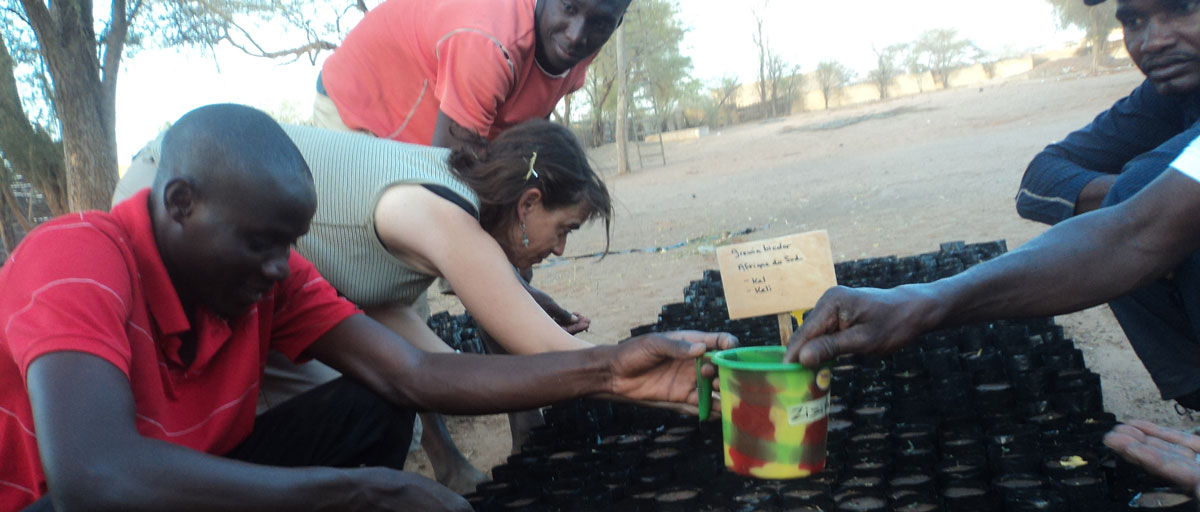ECOSYSTEM SERVICES
In data scarce regions, fieldwork and historical images help researchers fill in the gaps

In a new study, researchers estimated how ecosystem services have changed in rural Burkina Faso between 1952 and 2016. Photo: Hanna Sinare
Researchers combined current data with historical images and inputs from previous studies to estimate how ecosystem services have changed over time in northern Burkina Faso
- A novel approach allowed researchers to estimate ecosystem service changes over almost 65 years
- The method is simple and transparent and can be easily adapted to fit other contexts
- In northern Burkina Faso, trees and shrubs on fields are key to maintaining provisioning ecosystem services
DEALING WITH DATA SCARCITY: People in rural agricultural settings depend directly on local ecosystem services, which are strongly impacted by vegetation changes. But when there is little or no reliable data available, studying these changes can be a challenge.
This dilemma can be resolved using a model of plausible social-ecological change, researchers found in a paper recently published in Ecology and Society. They used this method to study ecosystem service changes in rural Burkina Faso.
The study was carried out by centre researchers Hanna Sinare, Garry Peterson and Line Gordon, together with Lowe Börjeson from the Department of Human Geography at Stockholm University.
Ecosystem services are key
In the Sahel, rural communities are highly dependent on the direct benefits produced by their local landscapes, or ecosystem services. In Burkina Faso for example, 80% of the rural population is occupied in different forms of agriculture, predominantly small-scale.
Meanwhile, vegetation and land use are strongly shaped by human activities and variation in rainfall. Studying the dynamics of ecosystem services can thus help researchers understand how changes in vegetation are connected to people’s livelihoods.
A method with potential
In the Sahel region, secondary data or historic documents that record changes in land use are hard to come by. Crop and livestock data are fragmented, and land cover maps are limited and often available only at a low spatial resolution.
In response to this, the authors illustrate how a novel method can help bridge data gaps. They combined fieldwork and data from previous studies with interpreting historical and satellite images to estimate changes in six rural villages in Burkina Faso over the period 1952-2016.
They highlight that this method can be useful for estimating changes in other data-scarce regions. This can be useful for the continued study of social-ecological dynamics in the Sahel.
The approach has the strengths of being simple, transparent, and easy to refine if additional data on change in generation or value to people become available.
Hanna Sinare, centre researcher
Conclusions from Burkina Faso
Applying this approach to Burkina Faso allowed the authors to observe how people’s relationship to their landscapes has evolved since 1952. They found a 60% increase in the land allocated to fields for cultivated crops while shrubland areas have decreased by 64%.
This means that provisioning ecosystem services from shrubs and trees are in decline. Yet, local communities are still heavily reliant on their supply of firewood and wild foods. The authors conclude that shrubs and trees should be conserved in future landscape developments.
Methodology
The authors used a simple model of plausible social-ecological changes to make a historical extrapolation that bridges data gaps, and assessed historical changes. Their approach combined the interpretation of historic aerial photographs and satellite images, with field observations and interviews. They combined results from previous fieldwork on the relative contribution of different units in the landscape to provisioning ecosystem services, with interpretation of historical aerial photographs and satellite images where they identified change in cover of the different landscape units. This resulted in a historical extrapolation of change in ecosystem services if the same landscape unit contributed to ecosystem services in the same way in the past. As such a simple extrapolation does not reflect reality, the authors then turned to available literature and secondary data that say something about the change in generation and change in value to people of different ecosystem services. Combining these provided a plausible interval for how ecosystem services have changed over time. The authors also added data on population changes to estimate the per capita change in ecosystem services over time.
Sinare, H., Peterson, G. D., Börjeson, L. and Gordon, L. J. 2022. Ecosystem services in Sahelian village landscapes 1952-2016: estimating change in a data scarce region. Ecology and Society 27(3):1.
Questions? Contact Hanna Sinare.








